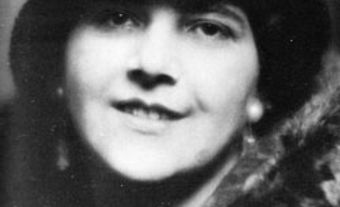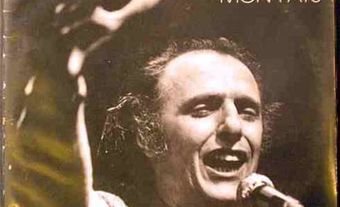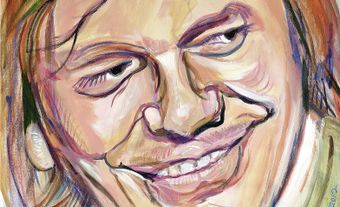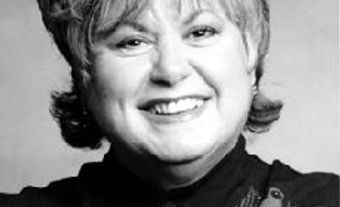Félix Eugène Leclerc, OC, GOQ, singer, songwriter, playwright, poet, novelist, actor, broadcaster (born 2 August 1914 at La Tuque, QC; died 8 August 1988 at Ȋle d'Orléans, QC). Félix Leclerc was a revolutionary artist whose work in several fields marked a turning point in Quebec culture. As a poet and playwright, he was one of Quebec’s literary giants. As a singer, he was a superstar in Canada and Europe, particularly in France. He greatly influenced the course of the Quebec chanson and paved the way for the popular chansonnier movement in Quebec and France. He was also a vocal proponent of Quebec nationalism and helped galvanize the collective identity of the people of Quebec. An inaugural inductee of the Canadian Songwriters Hall of Fame, he received the Prix de musique Calixa-Lavallée, the Prix Denise-Pelletier and the Diplôme d'honneur. He was made an Officer of the Order of Canada, a Grand officier of the Ordre national du Québec and a Chevalier of the Légion d'honneur de France.

Early Years
Félix Leclerc was the sixth of 11 children of a lumber and grain dealer. The family members all sang and played various instruments. At the age of eight, Leclerc was introduced to the music of Mozart and Schubert, which his older sister learned to play on the piano. At 18, he began his academic studies at the University of Ottawa, where he wrote his first song, “Notre sentier.” He was forced to abandon his schooling in 1933 because of the Depression. He went to work as a farmhand at Sainte-Marthe-du-Cap, near Trois-Rivières. He later drew on this experience for several of his songs.
After holding various jobs, including that of embalmer’s assistant, he became a radio announcer and scriptwriter at CHRC in Quebec City (1934–37) and at CHLN in Trois-Rivières (1937). During his three years in Quebec City, he took a few guitar lessons from Victor Angelillo and Bill Harris, two CHRC colleagues. He is also believed to have received some guidance from Thomas-Wilfrid Gagnon, the musician who sold him his first guitar (now held in the Musée régional de Vaudreuil-Soulanges) around 1934 in Quebec City. John Harry Ormsby, a private English teacher who encouraged Leclerc’s love for Quebec and pushed him to create original works, was a further influence.
Broadcasting, Acting and Writing
In 1939, Félix Leclerc joined Radio-Canada in Montreal as a radio scriptwriter. Several of his series were very popular, including Le Restaurant d'en face (on which he broadcast his song “Notre sentier”); Je me souviens (for which Hector Gratton composed the incidental music); L'Encan des rêves; and Théâtre dans ma guitare. At the same time, Leclerc acted in the Radio-Canada drama series Un Homme et son péché by Claude-Henri Grignon and Vie de famille by Henry Deyglun. He also appeared on stage with Émile Legault's Compagnons de Saint-Laurent (1942–45).
Leclerc's radio scripts attracted the attention of writer and filmmaker Albert Tessier, who encouraged their publication. They were collected under the titles Adagio (stories), Allegro (fables) and Andante (poems) and sold well. In 1948, Leclerc and his friends, Guy Mauffette and Yves Vien, founded the troupe VLM. It presented Leclerc’s plays Le P'tit Bonheur and La P'tite Misère in Montreal and throughout Quebec. That year, his play La Caverne des splendeurs won first prize in a one-act play competition organized by the Amis de l'art. Some of his songs, including Le P'tit Bonheur, served as interludes between scenes. Several of his other songs — such as “Hymne au printemps, “Le Train du Nord” and “Bozo” — became popular in Quebec in the late 1940s, especially through his Radio-Canada program, Félix Leclerc et ses chansons.
Success in Paris
In 1950, Félix Leclerc's career as a chansonnier became international. Jacques Canetti, an influential impresario from Paris who was artistic director of Philips Records, heard Leclerc perform in Montreal and offered him an engagement in Paris. Leclerc made his debut there in December 1950 in the ABC, a large Paris music hall. He shared the bill with the Compagnons de la chanson and Édith Piaf.
The success of Leclerc’s debut was followed by his first recordings and by tours of France, Belgium and Switzerland. Dressed in a checkered lumberjack shirt and accompanying himself on the guitar, he delivered his earthy songs in a robust baritone. He soon became a top-ranking star. In February 1951, he was awarded the Grand prix du disque de l'Académie Charles-Cros in Paris for his song “Moi, mes souliers.” Beneath his name, printed in large letters on the billboards, was “le Canadien.”
Career in Canada
Félix Leclerc then divided his time between Europe and Canada. In France, his performances in major radio programs, his appearances in the leading variety theatres and boîtes à chansons (e.g., the Trois-Baudets and Bobino), and his numerous tours made him a superstar.
He returned to Montreal in 1953 to take part in the Montreal Festivals, and received a hero's welcome. His career later obliged him to spend long periods of time in Europe, but his notable Canadian appearances included: his western tour in 1965; his performances at Montreal's Place des Arts in 1967 and Le Patriote in 1966, 1970, 1972, 1975 and 1976; and his shows at the National Arts Centre in Ottawa in 1971. He toured France, Belgium and Switzerland in 1973, and France again in 1975 and 1977. He received another Grand Prix du disque in 1958 for Félix Leclerc et sa guitare, and yet another in 1973 for his body of work. Perhaps his greatest triumph in Quebec was his appearance in 1974 with Gilles Vigneault and Robert Charlebois at the Superfrancofête in Quebec City.
Leclerc also appeared in films, including Les Brûlés (1959); Claude Jutra’s Félix Leclerc, troubadour (1959); La Vie (1967); C'est la première fois que j'la chante (1988); and Pieds nus dans l'aube (1994).
Nationalism
Though he was not associated with any political party, Félix Leclerc was motivated by a new commitment to Quebec independence. It is clear from the preface to his 1962 play L'Auberge des morts subites that he espoused the ideals of French Canadian nationalism even before the Quiet Revolution. From the mid-1950s to the end of the 1960s, several of his songs (“Tirelou,” “Tu te lèveras tôt,” “Les Rogations,” “Le père,” “Richesses”) predicted a radicalization of political positions.
In 1970, this eternal “rough peasant” began turning his forthright qualities toward public comment and protest. He used caustic irony as his primary weapon. In the song “L'Alouette en colère,” written after the 1970 October Crisis, Leclerc presented his vision of a Quebec that had been plundered and dispossessed. This sentiment was also expressed in his last three albums: L'Alouette en colère (1972); Le Tour de l'Île (1975); and Mon fils (1978).
Leclerc gave his final performance onstage in 1979. He made rare appearances and continued to publish from his retreat on the Ȋle d'Orléans. He also appeared at the first ADISQ gala (1979), which named the annual awards for Quebec recording and performing artists in his honour. (See Félix Awards.) In 1983, Leclerc was seen on the Radio-Québec TV program “Station soleil.” The Radio-Canada TV program “Rêves à vendre” (1984), hosted by Jean-Pierre Ferland, was broadcast in his honour. Johanne Blouin's recording of about 10 of his songs on the album Merci Félix, a few months before his death, was very successful. He also wrote two books — Rêves à vendre (1984) and Derniers calepins (1988) — that were published after his death.
Leclerc's death came as a shock to Quebec. A modest funeral was held on Île d'Orléans. Thousands of people gathered in Quebec City and Montreal. Messages were received from around the world, including from the French government. Leclerc pointed the way for a generation of singer-poets. He continues to have a wide following.
Output and Major Themes
Félix Leclerc's art and songs have been analyzed by numerous writers and critics. In La Chanson québécoise, Benoît L'Herbier wrote: “From the beginning Félix Leclerc's poetry has existed on a philosophic plane reminiscent of the finest and most illuminating works of La Fontaine. For, whether as writer or composer, Félix Leclerc is a moralist.” In his book Félix Leclerc, Luc Bérimont commented: “Leclerc's character is rich, complex, beyond grasp. He's a singer, of course, and a composer and performer, but of a kind to which music-hall standards cannot be applied. Félix Leclerc is an exception in a world where the chanson, mass-produced, is purely a commercial matter.”
The lyrics of Leclerc’s songs, whether narrative or reflective, are written in verses that sometimes recall oral tradition chanson forms. He drew inspiration from the elements — water, earth, sun, fire and wind — and his themes reflect a love of animals and nature. His songs embody a character that is either happy or sad depending on whether he has relinquished his childhood. References to castles, kings and dancing festivities speak to the tribulations and glories of human existence.
Leclerc’s poetry, simple and direct, conveys a tragic vision of existence. To Leclerc, the tragic character of humanity is rooted in nature. Human effort may occasionally lead to death under the yoke, but at the same time it provides a link with the beyond and adds a spiritual dimension to everyday actions and indeed to life in general. Nature is omnipresent in Leclerc's songs. The seasons provide the backdrop to the recurring themes of escape, death, God, woman and country.
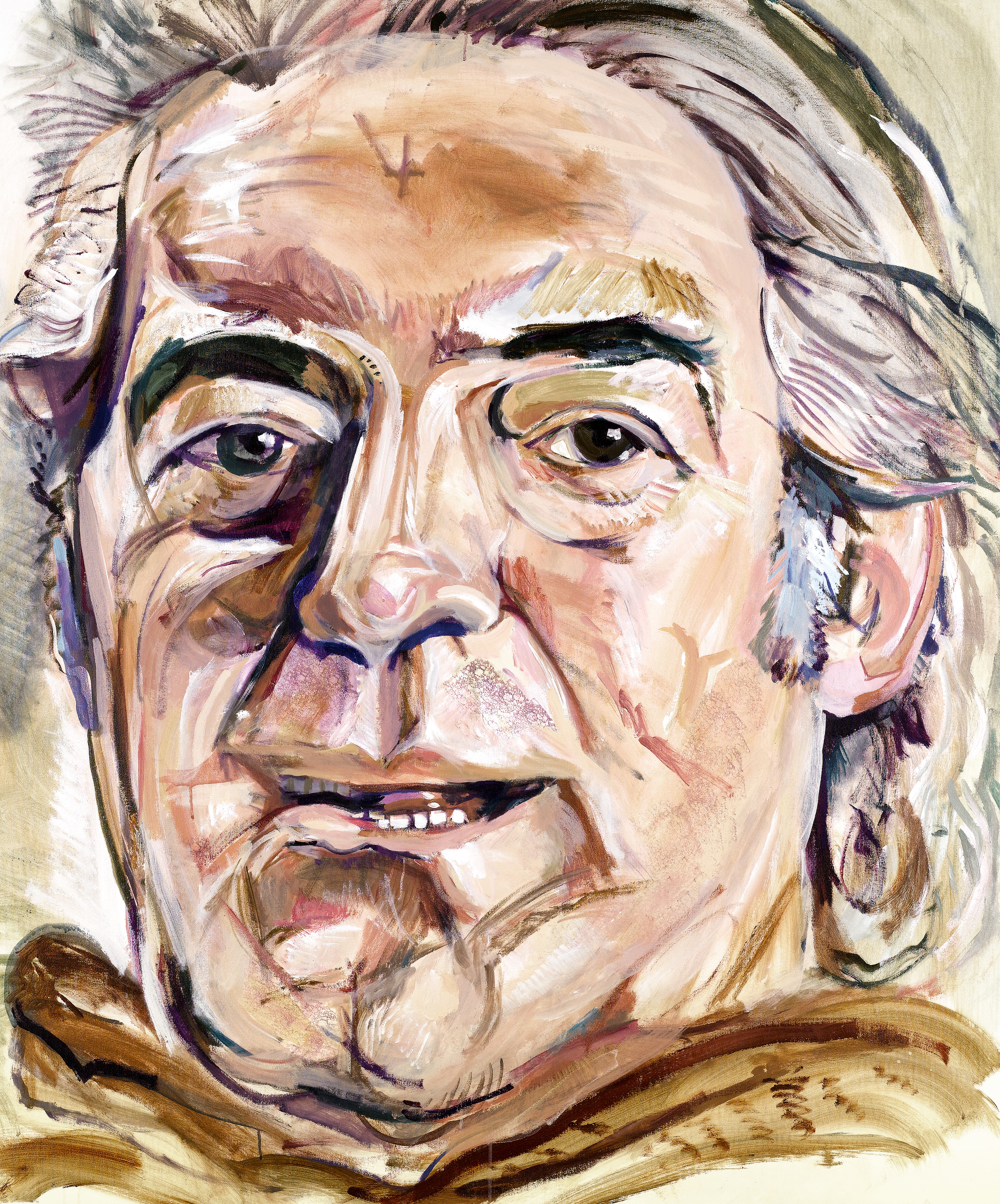
Characteristic Traits
In 160 songs (146 original compositions and 14 covers), Félix Leclerc distinguished himself from his French-speaking European and Quebec predecessors by his combination of carefully chosen verse and the unique style of musical setting for acoustic guitar. Among his characteristic traits are the guitar's lowered tuning (all strings one or one-and-a-half tones below standard) and the placement of the right hand over the high range of the fingerboard. His noteworthy techniques with the right hand include the integration of artificial harmonics (as in “Hymne au printemps”); the rapid strumming of the thumb on the strings (“La Drave”); the quick arpeggios executed with the thumb and index finger imitating the pick (“Les 100 000 façons de tuer un home”); and the combination of arpeggios and classical tremolo (“Le tour de l'Île”). In the left hand, there are occasional thumb barrés in the bass as well as the use of diminished seventh chords and major chords with added sixths.
Influences
Overall, six major categories of influence can be traced in Leclerc's music. First, he appears to have been mildly influenced by the classical repertoire, due to his pianist sister and possibly the teaching of Thomas-Wilfrid Gagnon. The second influence incorporates the standard traditional Québécois songs of Ovila Légaré, Madame Bolduc, and La Bonne chanson de l'abbé Gadbois; songs of French oral tradition; and instrumental Celtic folklore (Scottish and Irish reels).
A further influence was that of popular early 20th-century songs from France (including those by Maurice Chevalier, Lucienne Boyer and Tino Rossi). This is demonstrated by the musette (“Les Dimanches”) and the numerous ballade passages in triple time with an unsteady pulse (“Demain si la mer,” “La fille de l'Île,”). Furthermore, there are traces of gypsy music and Russian folklore in the timbre of Leclerc's deep voice and the quick right-thumb strumming of the guitar strings.
African American blues influences (e.g., Blind Lemon Jefferson, Blind Blake) are apparent in the lowered tuning of the guitar and in the chosen fingerings of some left-hand guitar shapes. The eighth-note rhythm jazz swing accompaniments (e.g., Glenn Miller, Tommy Dorsey) are another African American element (as in “Bozo,” “Le P'tit Bonheur”).
Finally, Leclerc translated the old-time country music style of Jimmie Rodgers, the bluegrass of Bill Monroe and the Western swing of Bob Wills and Gene Autry by inverting guitar chords (Dm/F; D/F#), and playing the occasional rapid rhythm accompaniment of an eighth note followed by two sixteenths (as in “Attends-moi, Ti-Gars”).
Impact
Félix Leclerc's signature qualities had a revitalizing effect on the chanson in France. His music provided a catalyst for the careers of Georges Brassens, Guy Béart and Jacques Brel, among others. In Chansonniers du Québec, Christian Larsen wrote: “Félix Leclerc is to the Canadian chanson what Trenet was to the French chanson: a revolutionary, a turning point, and a leader. Because of him, fortune-hunters, poets and shopkeepers set out in search of a new Klondike... although he did not create the Canadian chanson, Leclerc produced its public and its market and to some extent was responsible for the present generation of young chansonniers.”Honours and Legacy
The Montréal Festival du disque granted a Prix Félix-Leclerc to Gilles Vigneault for “Mon pays” in 1965. A float was dedicated to Leclerc at the 1966 Société Saint-Jean-Baptiste parade in Montreal. In 1977, the inaugural Prix Denise-Pelletier for the performing arts was awarded to him by the Quebec government. The Montreal Symphony Orchestra performed a medley of his works at the 1978 Saint-Jean-Baptiste festivities. In 1990, a sculpture was created in Leclerc’s honour in Lafontaine Park in Montreal. A 2,000-page anthology of his poems and other literary works was published in Montreal in 1994. In 2003, the Canadian Songwriters Hall of Fame honoured Leclerc as one of its inaugural inductees.

After Leclerc's death, his heirs established the Fondation Félix-Leclerc to encourage the Quebec chanson. Many of Leclerc's songs have been published in the following collections: Les Chansons de Félix Leclerc — le Canadien (1950); Félix Leclerc, 12 chansons nouvelles (1958); Les Chansons de Félix Leclerc (1969); and 24 Chansons de Félix Leclerc (undated). His songs have been performed by the Séguins, Monique Leyrac, André Gagnon, Fabienne Thibeault, Groovy Aardvark, Daniel Boucher, Marie-Hélène Thibert and many others.
In 2014, Leclerc was named a historical figure by the Government of Quebec. According to the Commission de toponymie du Québec, Leclerc ranks fifth (after Samuel de Champlain, Jacques Cartier, Frère Marie-Victorin and Jean Talon) among historical figures whose names are most frequently attributed to streets, places and buildings in Quebec. There are three museums dedicated in whole or in part to his work: the Musée régional de Vaudreuil-Soulanges; the Centre Félix-Leclerc in La Tuque; and l'Espace Félix-Leclerc, on the Île d'Orléans.
(See also Chansonniers; The Bozos; Choeur V'là l'bon vent.)
A version of this entry originally appeared in the Encyclopedia of Music in Canada.
Awards
- Grand prix du disque, l'Académie Charles-Cros (1951, 1958, 1973)
- Officer, Order of Canada (1968)
- Prix de musique Calixa-Lavallée, Société Saint-Jean-Baptiste (1975)
- Diplôme d'honneur, Canadian Conference of the Arts (1976)
- Prix Denise-Pelletier, Government of Quebec (1977)
- Honorary Doctorate, Université du Québec (1982)
- Grand officier, National Order of Québec (1985)
- Chevalier, Légion d'honneur de France (1986)
- Médaille de l'Académie des lettres du Québec (1987)
- Prix Fleury-Mesplet, Salon du livre de Montréal (1988)
Writings
Poetry
- Adagio (1943)
- Allegro (1944)
- Andante (1944)
- Le Hamac dans les voiles (1952)
Novels
- Pieds nus dans l'aube (1946)
- Le Fou de l'Île (1958)
- Carcajou ou le diable des bois (1972)
Theatre
- Maluron (1947)
- La Caverne des splendeurs (1948)
- Le P'tit Bonheur (1948)
- Dialogue d'hommes et de bêtes (1949)
- Théâtre de village (1951)
- Les Péchés dans le hall(1952)
- Le Hamac dans les voiles (1952)
- Moi mes souliers(1955)
- Sonnez les matines (1956)
- Le Fou de l'île(1958)
- L'Auberge des morts subites (1962)
- Les Temples (1966)
- La Peur à Raoul (1973)
- Carcajou ou le diable des bois (1973)
- L'Ancêtre (1974)
- Qui est le père ? (1977)
Others
- Moi, mes souliers (1955)
- Le Calepin d'un flaneur (1961)
- Chansons pour tes yeux (1968)
- Cent chanson (1970)
- Rêves à vendre (1984)
- Le Dernier Calepin (1988)
Discography
- Félix Leclerc chante ses derniers succès sur disque (1951)
- Felix Leclerc chante (1957)
- Les Nouvelles Chansons de Félix Leclerc (1959)
- Le Roi heureux (1959–62)
- Félix Leclerc (1964) (retitled Le Jour qui s'appelle aujourd'hui)
- Mes premières chansons, 1951–3 (1964) (retitled Moi mes souliers)
- Moi mes chansons (1966) (retitled Mes longs voyages)
- La Vie (1967)
- Cent Chansons (1968)
- Félix Leclerc dit pieds nus dans l'aube (1969)
- J'inviterai l'enfance (1969)
- Félix Leclerc chante pour les enfants (1970)
- Pleins feux sur Félix Leclerc (1971)
- Pleins feux sur Félix Leclerc Vol 2 (1971)
- L'Alouette en colère (1972)
- Félix Leclerc (1972)
- Merci la France (1975), 2-Poly 2675-133.
- Le Tour de l'île (1975)
- Le Temps d'une saison, with Claude Léveillée (1976)
- Mon fils, with Gilles Vigneault, Jean-Pierre Ferland, Monique Leyrac et al. (1978)
- Le Bal (1979) (arranged by François Dompierre)
- Chansons dans la mémoire longtemps (1979) (highlights reissued as Félix Leclerc Profil)
- La Légende du petit ours gris/Le Journal d'un chien, with Claude Léveillée (1979)
- Mouillures (1979) (arranged by François Dompierre)
- Prière bohémienne (1979) (arranged by François Dompierre)
- L'Ancêtre (1989)
- Heureux qui comme Félix (1989)
- Le P'tit bonheur (1989)
- Heureux qui comme Félix: une histoire de Félix Leclerc (2000)
- Chansons perdues, chansons retrouvées: les enregistrements de 1950 à 1954 (2005)

 Share on Facebook
Share on Facebook Share on X
Share on X Share by Email
Share by Email Share on Google Classroom
Share on Google Classroom



